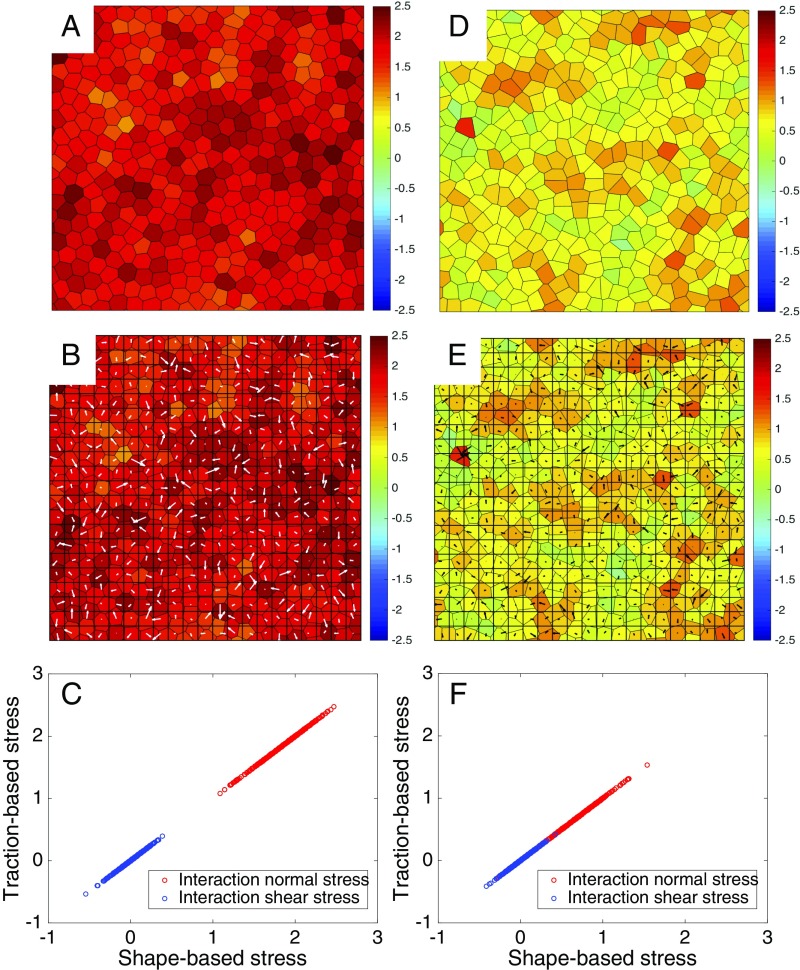Fig. 2.
Comparison of shape-based and coarse-grained traction-based stress. (A–C) Solid state at , . (D–F) Liquid state at , . (A and D) Interaction normal stress calculated from the instantaneous cell shapes obtained from Eqs. 3a and 7. Red denotes positive (contractile) stress and blue negative (extensile) stress. (B and E) Interaction normal stress calculated using the coarse-grained traction-based mechanical inference by inverting Eq. 9 and using Eq. 3a. The arrows denote the traction forces. (C and F) The coarse-grained traction-based mechanical inference is validated by plotting the traction-based stress against the shape-based stress in the solid (C) and in the liquid (F) state. The data are for cells in a square box of side with and with periodic boundary condition.

